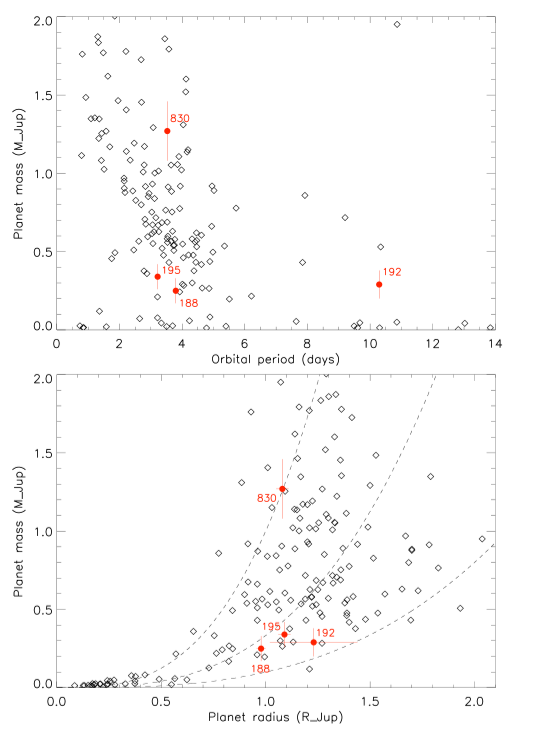Characterization of four new transiting planets
Thanks to the data of the high resolution spectrograph HARPS-N, the group leaded by G. Hebrard could
characterize four new transiting extrasolar planets: KOI-188b and KOI-195b are bloated hot Saturns, with orbital periods of 3.8 and 3.2 days, and masses of 0.25 and 0.34 MJup, respectively.
They are located in the low-mass range of known transiting, giant planets. KOI-192b has a similar mass (0.29 M Jup) but a longer orbital period of 10.3 days. This places it in a domain where only few planets are known. KOI-830b, finally, with a mass of 1.27 MJup and a period of 3.5 days, is a typical hot Jupiter.
The four planets have radii of 0.98, 1.09, 1.2, and 1.08 RJup, respectively. The four objects were first identified by the Kepler Team as promising candidates from photometry of the Kepler satellite. Thanks to the radial velocity follow-up secured with the HARPS-N spectrograph at the TNG it was possible to establish their planetary nature.
The combined analyses of the whole datasets allow to fully characterize the four planetary systems. These new objects increase the number of well-characterized exoplanets for statistics, and provide new targets for individual follow-up studies.

Figure 1: Masses and orbital periods (top) and masses and radii (bottom) of the four new planets KOI-188b, KOI-195b, KOI-192b, and KOI- 830b (red circles), compared to other known transiting, close-in planets (black diamonds). On the bottom panel, the three dashed curves show the Jupiter density, and 1/3 and 1/10 of that value (from left to right).
For more information:
Link at the paper on arxiv
TNG & Harps-N
Gloria Andreuzzi, INAF-TNG, dydat@tng.iac.es

